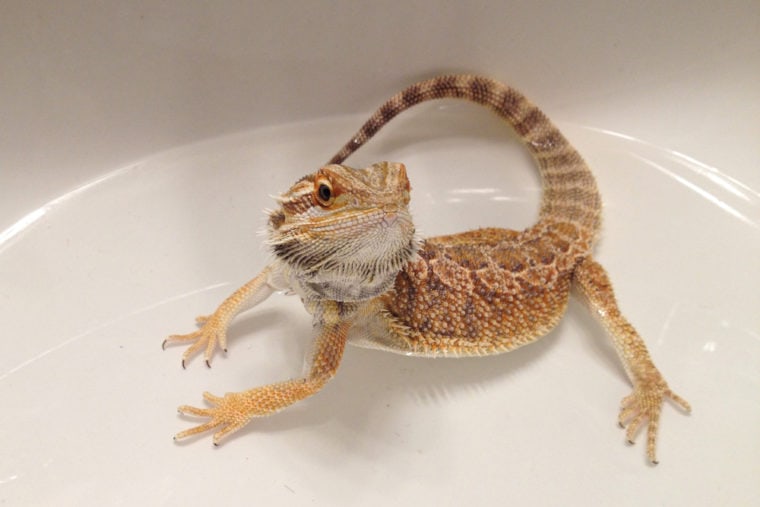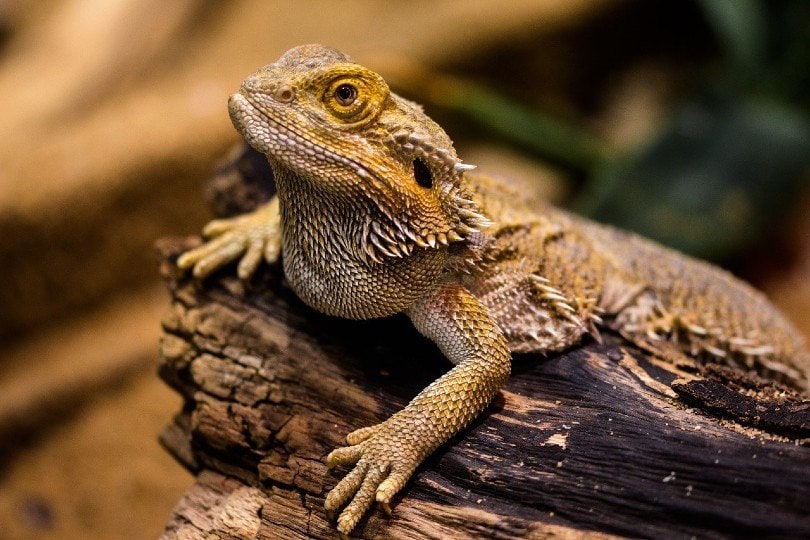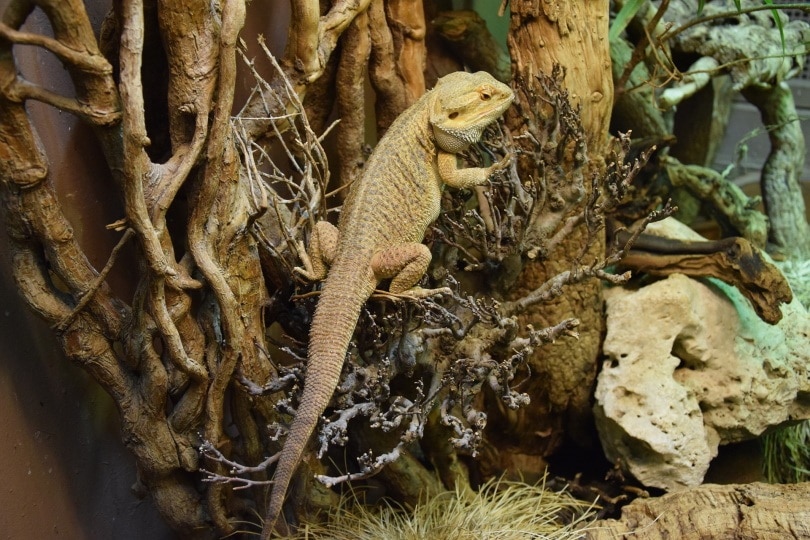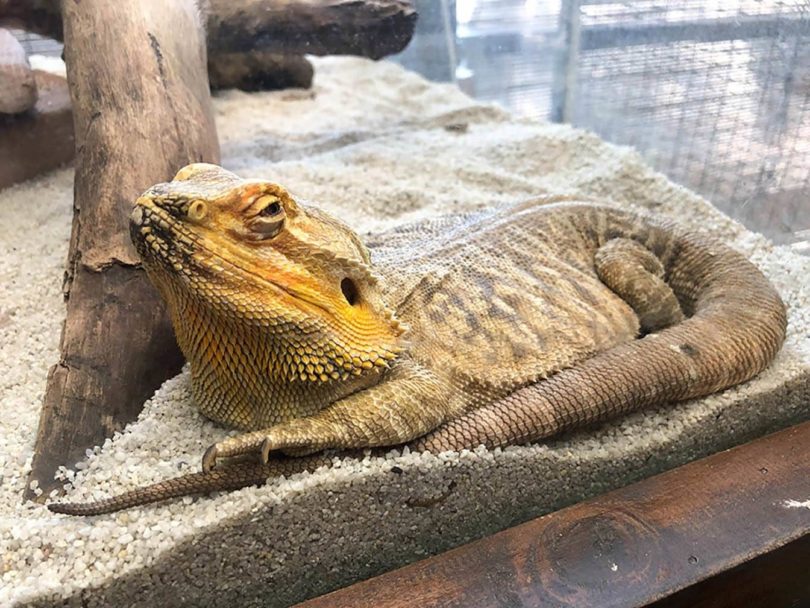
Because bearded dragons are natural desert dwellers, but as pets, they can benefit from a bath.
In this article, we are going to tell you how to bathe your bearded dragon, starting with gathering your materials and ending with cleaning up. This will allow you to bathe your bearded dragon safely from beginning to end. Let’s get started.
Why Do You Need to Bathe Your Bearded Dragon?
If you are a new bearded dragon owner, you are probably wondering why you need to bathe your bearded dragon. After all, they don’t have hair or fur that needs to be cleaned. Even though they are covered in scales, you still need to give them a bath for several reasons.
A bath may help your bearded dragon with shedding, provide them with some exercise, and can help promote bowel movements as well.

What You’ll Need
Whereas humans love to lather up in luxurious soaps during bath time, bathing your bearded dragon requires almost no ingredients. You do not wash your bearded dragon with soaps or any other type of ingredients. Soap can irritate their skin and they might accidentally swallow it.
Prepare the Bath
Once you gather up all of your materials for your bearded dragon’s bath, the next thing you need to do is prepare the bath itself. Preparing the bath is the most crucial part of bathing your bearded dragon because it ensures that the bathing process is safe and efficient for your beardie.
Because bearded dragons may naturally harbor pathogenic bacteria, they should have their own bath container or tub which you should not use for anything other than giving your pet a bath.

Water Depth
No matter what option you select for your bearded dragon’s bathing container, do not fill it up completely with water. Instead, you should only fill up the water so much that it reaches your bearded dragon’s shoulders or chest. This depth is safe and will ensure the bearded dragon does not drown. For most adult bearded dragons, this indicates a bath that’s around 2 inches deep (approximately 5 centimeters). Juvenile bearded dragons would require a bath about half that depth.
Water Temperature
You also need to check on the water temperature. You should use lukewarm water that’s between 85 – 100 °F (29 – 37.7 °C), with a preferred temperature around 90°F (32°C).
WaterDechlorination
Tap water is the best option for bathing your bearded dragon. You should always dechlorinate your bearded dragon’s water with a water conditioner.
How to Bathe Your Bearded Dragon
After you have set up the bath, now it is time for the fun part. You get to bathe your bearded dragon! Because you cannot use any soaps or detergents on your bearded dragon, bathing your beardie is really easy and super fun.
Simply put the bearded dragon inside the water. On its own, the bearded dragon may splash around by themselves. Most bearded dragons love water and their bath. Still, you will likely need to help your bearded dragon out a little bit. Splash some water on your bearded dragon’s body.
Some people like using a paper cup to pour the water down the bearded dragon’s tail and back, but your hands will work just as well. Make sure to avoid your bearded dragon’s eyes. Allow your bearded dragon to sit in the water for at least 15 to 30 minutes.
You can use a very soft toothbrush to gently massage your bearded dragon’s skin, but you shouldn’t scrub them with force. If your bearded dragon is about to shed, you shouldn’t scrub them at all. If your bearded dragon has finished a shed, you can gently help them dislodge any leftover skin (provided the shed finished at least 5 days ago).
A rock or other surface is necessary so that your bearded dragon can rest on a solid surface if they’re tired of swimming.
Clean Up
Whenever you are ready to take the bearded dragon out of its bath, it’s time to clean up. Once you remove the beardie from the water, don’t put it back in its enclosure just yet. Make sure to gently pat the bearded dragon dry using a soft towel first.
Do not skip the drying process. If you do, the bearded dragon’s substrate in its tank will likely stick to its body, and it will be more difficult for the bearded dragon to warm back up. After you pat the bearded dragon dry, place it back underneath the basking lights in its enclosure.
With the bearded dragon safely in its enclosure, let out the water in the container. Make sure to wash the container thoroughly with a detergent (alternatively, you may use vinegar). It is very important to thoroughly wash your hands after a cleanup, as bearded dragons may naturally harbor pathogens that are harmful to humans.
Conclusion
Bathing your bearded dragon is an easy, efficient, and fun way to help your beardie with a shed or to offer them some exercise. Not to mention, it’s a great way to bond with your bearded dragon. Just make sure to provide a safe and suitable amount of water and the correct temperature to ensure that your bearded dragon remains safe throughout the entire process.
So long as you are diligent in offering the right water, your bearded dragon will love splashing around during bath time!
- Related Read: How to Trim a Bearded Dragon’s Nails (with Video Guide)
Featured Image Credit: Britt J, Shutterstock










